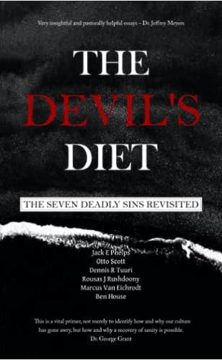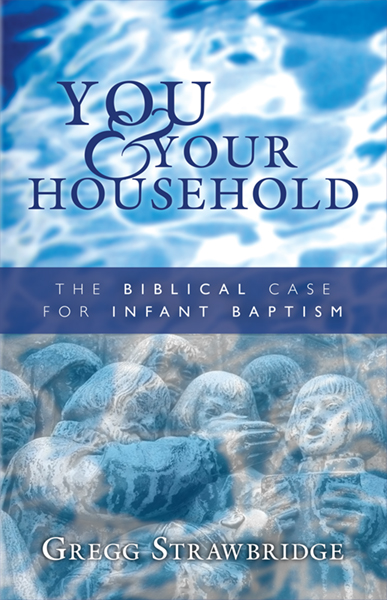Guest Post by Dr. Steve Jeffery, Minister at Emmanuel Evangelical Church
“Are you serious? Your kids are following a medieval curriculum? From the days of feudalism; when life was nasty, brutish, and short; when people thought the earth was flat and doctors diagnosed their patients by drinking their urine? If that’s what you mean by ‘Classical education,’ you can keep it. I want my kids to have a Christian education.”
These sentiments are a little overstated, perhaps, but for many parents with children in Classical Christian education they’re not entirely unfamiliar. The criticism refers to the “trivium,” the three-fold medieval pattern of grammar, dialectic and rhetoric that lies at the heart of Classical education. This system just isn’t biblical, the argument runs. It’s pure paganism, devised by scholastic casuists long after Christendom crumbled, and now raised from the rubble by well-meaning Christians who’ve read a little too much Bede and Boethius and not enough Bible. No faithful Israelite would ever have dreamed of subjecting his kids to such a crackpot scheme, and you can bet that whatever Timothy learned from Grandma Lois and Ma Eunice, the trivium played no part.
At first glance the criticism seems justified. A medieval system of education might well be preferable to one built on the shifting sands of post-60s educational experimentation, but as Christians we must surely set our standards a little higher than that. And even if the medieval reality didn’t quite reach the depths of the “nasty, brutish, and short” caricature, it wasn’t all wine and roses either. These are the people who bequeathed to posterity the doctrines of purgatory, papal indulgences, and transubstantiation; they’re not the obvious go-to guys when we’re trying to figure out how to raise our kids.
But the critics are wrong. The trivium goes back further than many people think – a lot further, in fact. The roots of the trivium stretch right back to the Bible. These roots are worth exploring, even for parents already convinced of the value of the Classical model. And perhaps a brief biblical outline might also be helpful for parents new to the idea of Classical Christian education – parents who may not readily be convinced merely by the example of some urine-drinking flat-earthers.
Let’s begin with a reminder of the trivium, famously revived in Dorothy L. Sayers’ famous essay “The Lost Tools of Learning.” There Miss Sayers explains the three stages of the medieval trivium: grammar, dialectic, and rhetoric.
During the grammar stage, children were drenched in a flood of raw information. They learned the stories and legends of great literature; the dates, events, and personalities of history; the countries and capitals of the world. Mathematics was all about sums and multiplication tables; theology classes were devoted to the biblical narrative, the creed, and the Ten Commandments; and language lessons were a whirlwind tour of Latin grammar and vocabulary. (I will irk the hardened classicists in passing by signaling my strong preference for Koinē Greek over Latin, but I will not attempt to defend the point here – maybe another day.) Contrary to popular belief, young kids don’t object to this kind of rote-learning in the slightest. Only an adult, for whom the fun of endlessly chanting nursery rhymes is all but forgotten, could think such a thing. Children will happily repeat “Eeny, meeny, miney, moe” ad nauseam; they will be no less amused by “Amo, amas, amat” (or, if I had my way, “Philō, phileis, philei”). If it can be learned by heart, it belongs in the grammar stage, and youngsters will drink it in.
Next came the dialectic stage, when raw facts stepped aside allowing logic and disputation to enter the arena. The aim was to teach the child to think rationally and argue correctly. The study of formal logic was central, and this was then applied across all the subjects whose grammar had previously been learned. The student would be introduced to critical essays and commentaries; to debate and discussion; to historical analysis, advanced arithmetic, systematic theology, and ethics.
The move from grammar to dialectic mirrors the child’s natural development. It begins as they enter the age of the interminable “Why?” questions, when they start to think for themselves and question Mum and Dad’s decisions. They are beginning to cut their dialectical teeth, and they need something to chew on.
Finally, the child entered the rhetoric stage. This was the time for creativity, when literary analysis and criticism gave way to appreciation and self-expression. Budding mathematicians were challenged not merely to learn proofs, but to devise them; young scientists deployed the understanding gained previously to formulate and perform experiments of their own. Above all, the rhetoric stage aimed to equip students to present and defend their views in a coherent, elegant, and persuasive manner. No longer was it sufficient merely to know about the world or understand how it works; the time had come to shape it and change it.
If we turn to the Bible with this three-fold pattern in mind, we notice something intriguing. These three educational stages map exactly onto the structure of God’s self-revelation in Scripture, and thus onto the development of his relationship with his people. Where the trivium says “Grammar, dialectic, rhetoric,” the Bible tells the unfolding story of “Priest, King, Prophet” through Israel’s history.
The first office to dominate in Israel’s life was that of the Priest. True, there were prophets in the early days (Abraham and Moses, for example), but the Priesthood was the first institution to be formally established in the nation of Israel. The people had a tabernacle, regulations for sacrifice, and a well-oiled priestly system long before the monarchy, and many centuries before the writing Prophets showed up.
Priestly existence was simple existence. Training to be a Priest was a matter of learning long lists of detailed rules, the basic grammar of Israel’s relationship with God. Consider the books of Exodus and Leviticus, for example. After Israel escaped from Egypt, the Ten Commandments and the case laws left little doubt about how to negotiate life’s daily conundrums. None of the details of the Tabernacle’s furnishings or the Priestly garments were left to chance; every detail was specified. When the glory of the LORD filled the Tabernacle, leaving Moses and his friends sitting outside in a confused huddle wondering what to do next, the LORD himself came to their aid with several feet of scroll giving precise instructions about sacrificial rituals and priestly ordinations, followed by several feet more about when the sacrifices would be necessary. A Priest didn’t have much creative thinking to do. Indeed, creativity in priestly duties was best avoided, as Nadab and Abihu discovered to their cost. The message was simple: Leave the thinking to God, just follow the rules. That’s all.
The office of King emerged later, and brought much greater complexity. A Priest could get away with following some simple rules, but a King must apply these rules in the complex and every-changing situations of real life. Grammar was no longer enough; a faithful King needed dialectic.
To take a purely random example, a King might be presented with two distraught, squabbling mothers, both claiming that a certain child belongs to them. The situation is confusing, and the King is thrown into the turmoil of conflict and debate. There’s no specific rule to follow here. The King can’t just turn to the appropriate Bible verse and look up the answer. He needs to figure it out for himself. God has given him the tools for the job, but he needs to do a lot more of the thinking.
Godly kings were therefore characterized by wisdom. This wisdom must obviously be built on the foundation of Israel’s priestly grammar, and therefore a newly-enthroned King’s first task was to copy out his own personal copy of the Torah. But mere knowledge was no longer enough. A King must address not just the “What?” of life, but also the “Why?” and the “How?” For this reason, the books of Ecclesiastes, Song of Solomon, and Proverbs – books devoted to these complex and teasing questions – are associated with Solomon, Israel’s preeminent wise King.
The formal office of Prophet emerged last. Of course, Prophets had spoken the word of God from the beginning, but they achieved their greatest prominence only after the establishment of the monarchy, and the earliest writing prophets arose several generations after King David. A Prophet needed to deal with even greater complexity than a King. The King’s job was to keep everything working right; the Prophet stepped in when the King (and with him the whole nation) had gone wrong. In relation to God, the Prophet was a confidant, one with whom the LORD consulted and discussed his plans. But in relation to the world, the Prophet was preeminently a speaker. His task was to persuade, to use words in a powerful and compelling way, to change people’s minds and so to change the world. The Prophet was a mover and shaker, and the successful Prophet was a master of rhetoric.
Now, let’s think about how this Priest–King–Prophet progression applies to individual human lives. Children move through these same three stages as they grow from childhood (Priest) through their teenage years (King) to mature adulthood (Prophet). Of course, there are no hard and fast boundaries – no one turns from a Priest to a King overnight. Moreover, mature adults still have many priestly and kingly responsibilities alongside their prophetic tasks, just as Israel still retained Priests after the establishment of the monarchy. Nonetheless, a definite progression is discernible, both in Israel’s history and in human life, and it is this that provides the basic biblical foundation for what later became known as the trivium.
The significance of these stages of growth is not restricted to a child’s education. The whole of a child’s life has the same shape. It’s immensely valuable for parents to be aware of this, for it helps us to have the right approach to different stages of our children’s development.
Let’s begin with early years of a child’s life – the priestly stage. Here, life is very simple: just do what Mom and Dad tell you. A child’s life needs to be shaped by plenty of straightforward, direct instructions: get up, get dressed (in these clothes), eat your breakfast, don’t put your sister’s doll in the microwave, and so on. As parents, we need to make sure our instructions are clear and unambiguous, or our children won’t know what to do, we’ll end up frustrated, and they’ll be upset and confused. Don’t worry if your little toddler doesn’t yet figure much out by himself; he’s not ready for this. If your three-year-old spills her breakfast cereal all over the floor while you’re out of the room, don’t get annoyed that she hasn’t taken the initiative to start clearing it up. She’s still at the priestly stage, and initiative isn’t in the job description. But if you say, “C’mon, sweetie, eat your Cheerios,” and she throws a tantrum, then that’s the moment to lay down the law, because laws are precisely what the little darling needs in these early years.
As the years pass, a wise parent will start to give a growing child more and more kingly responsibility. A child might receive pocket money, and will therefore need to show a degree of wisdom and discernment in spending it. He’ll be given a little more freedom in how he uses his time. He’ll be given tasks that require thought and initiative (“Could you get some breakfast for your sister, son?”) rather than straightforward jobs requiring simple obedience. And if he scatters Cheerios all over the floor before heading out to play baseball in the back yard, then a firm hand is in order, because by now he should be able to figure out for himself that a tidy kitchen comes before the perfect curveball.
As adulthood approaches, life takes on more prophetic aspects. Instead of merely working out how to spend money, the older teenager needs to work out how to earn it. Instead of just taking the initiative to help keep the house clean and tidy, the young woman (no longer the little girl) will have to work out for herself how her own home ought to be managed. After all, one day she’ll have flown the nest and be managing her own household. Then it won’t be enough merely to keep the rules (like a Priest), or even to understand the complexities of the world (like a King); she and her husband will need to knock it back into shape when it goes wrong. This is the task of a Prophet.
This Priest–King–Prophet structure also helps us to identify some ways in which a child’s upbringing can go wrong. One potential problem is that a child never learns the priestly rules before entering the more complicated kingly and prophetic stages of life. Children who have not been trained in the basic rules of godliness – love your neighbor as yourself, keep the Ten Commandments, bear the fruit of the Spirit – have not the slightest hope of dealing with the complexity of life at college or in the workplace. It was the same in ancient Israel. The King needed to master the priestly rules in all their glorious simplicity if he was to have any hope of applying them in the rough and tumble of the world. For this reason, parents should be unashamed about teaching their kids the basic dos and don’ts of Christian godliness at an early age. Ten Commandment wallcharts in the nursery and fruit of the Spirit pictures on the bathroom door are not an admission of defeat; they’re early signposts along exactly the right road.
The different problem can occur when parents refuse to let their children grow up. Many Christian parents do a great job of training young priests – children well-versed in the ABCs of the Christian life. These children often grow rapidly, becoming Kings and Prophets faster than their parents might expect, and by the age of eighteen or so they’re pretty much ready for the world. At this point the parents panic and slam the gates shut, unnerved or even intimidated by the spiritual stature of their six-foot baby. They misinterpret their child’s energy and drive as rebellion, and create in him a spirit of restlessness and resentment. This is not the fault of the child; it’s the fault of the parents. For the child is in fact no longer a child at all; he’s an adult, and it’s about time he was allowed to live like one. The farmer who raises a prize-winning 1000-pound bull has done a great job. But the farmer who persists in keeping that snorting beast in the same little pen where it was born shouldn’t be surprised if he wakes up one morning to find the gate hanging off its hinges.
In the end, all of this boils down to a single lesson: Parents must live by faith in the covenant promises of God. Parents who really believe that God keeps his promises to his people and to their children will joyfully anticipate the day when their children become better parents than they. Just as every child needs to learn that he is not yet an adult, all parents need to learn that their kids one day will be. We’re preparing them for that day in order to let them go.
Steve Jeffery is Minister of Emmanuel Evangelical Church, London, UK. He blogs on the church website at www.northlondonchurch.org<>как посмотреть на какой позиции
Read more
On the plus side for the two-kingdom approach… A bulwark against theonomy and reconstructionism





























